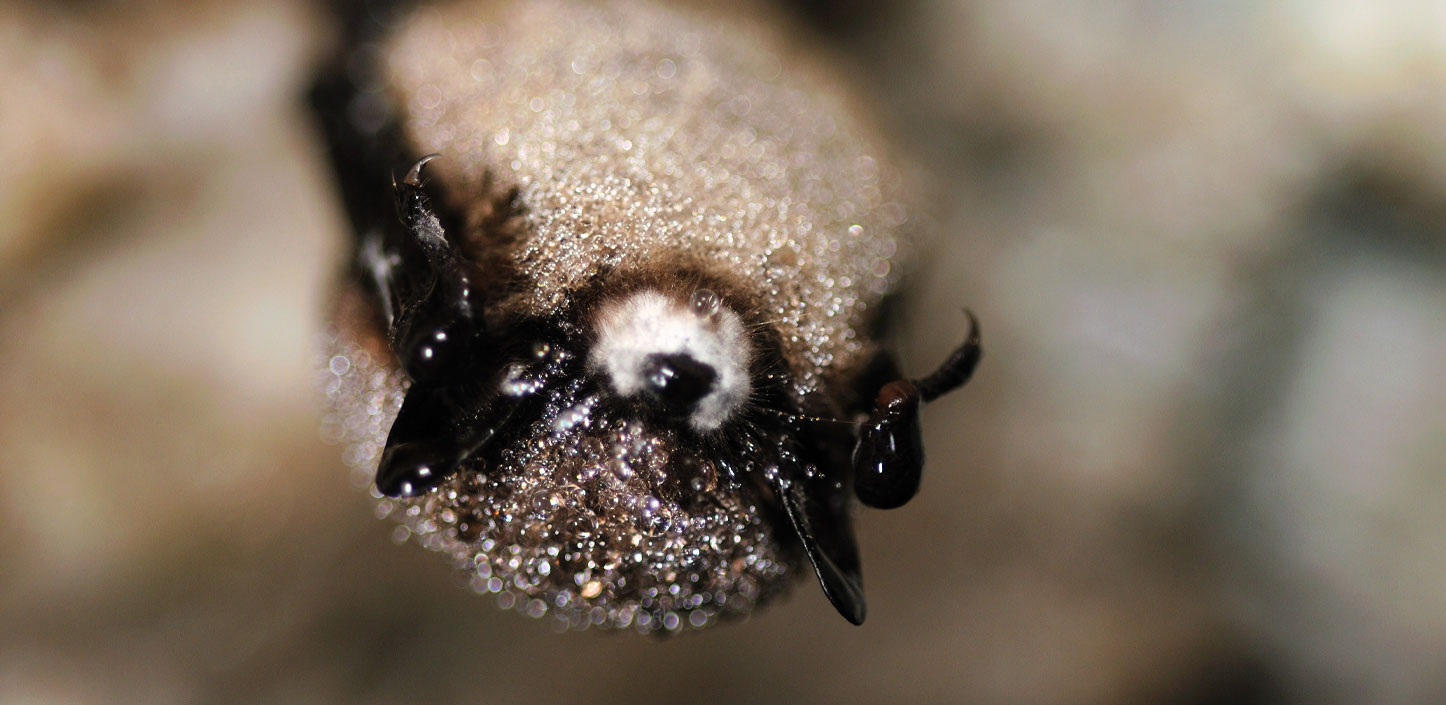
Fighting the spread of white-nose syndrome in bats
Bats might get a bad rap, but these hardworking mammals play a crucial role in North America by controlling insect pests. Bats eat enough pests to save the agriculture industry more than $3.7 billion in crop damage and pesticide costs. Recent studies estimate that the pesticide services of bats are worth more than $1 billion annually to the U.S. corn industry alone.
But North American bat species are suffering from a lethal disease: white-nose syndrome (WNS), which has killed millions of bats over the past 16 years.
In some sites where WNS has been detected, up to 100 percent of bats have disappeared. Since signs of the disease were first documented in New York in 2006, WNS has spread rapidly to 40 states and eight Canadian provinces. Most recently, it was confirmed in New Mexico in 2023 and in Idaho and Colorado in 2022.
WNS is caused by a cold-loving fungus called Pseudogymnoascus destructans (Pd) that infects hibernating bats. More than half of the bat species in the United States and Canada hibernate to survive the winter and are potentially susceptible to this disease. The white, fuzzy fungus often covers a bat’s face – hence the name – and causes them to behave erratically, burning energy they need to survive the winter. Without a solution to this devastating problem, several bat species may be in danger of extinction.

Working with a variety of public and private partners in 2017, the U.S. Fish and Wildlife Service and NFWF created the Bats for the Future Fund (BFF) to test and deploy advanced techniques and tools to address this urgent conservation need.
Since then, BFF has awarded over $4.8 million to 25 projects, which generated some $3.4 million in matching funds for a total conservation impact of more than $8.2 million. The projects support research, treatments, tools, and strategies to promote bat survival and recovery. BFF has led to several exciting developments in reducing the impacts of WNS in North America.
Projects successfully tested potential management tools to address WNS, including the use of ultraviolet light, vaccines, probiotics, volatile organic compounds and synthetic compounds to reduce the impacts of Pd.
The BFF Program Report captures the innovative work being done to continue to fight the spread of WNS.
